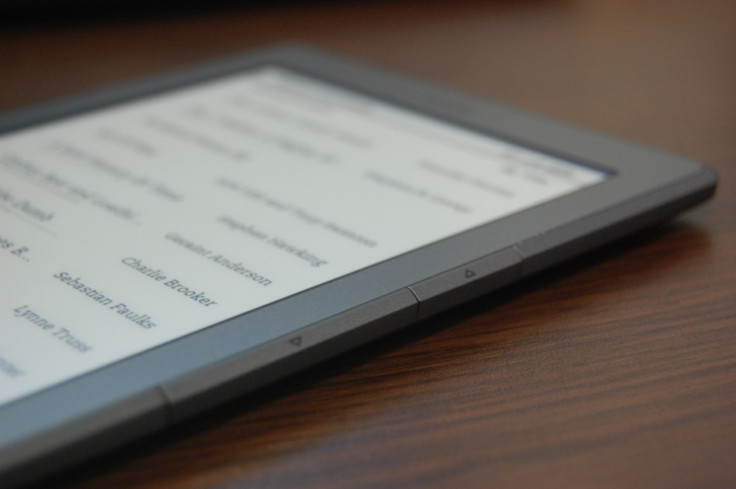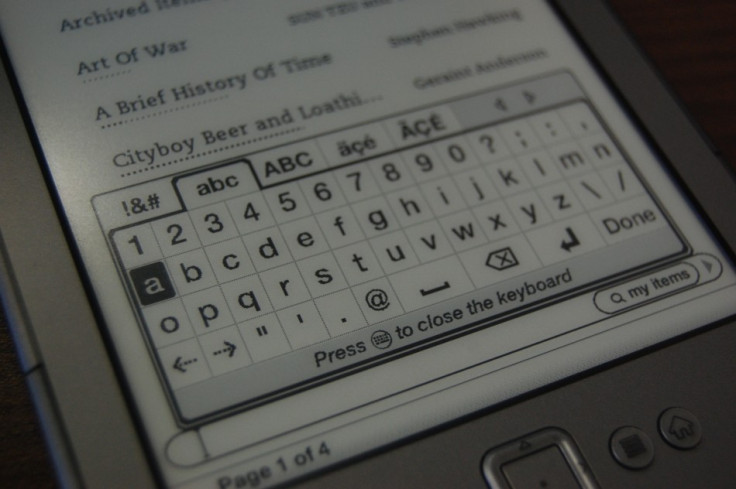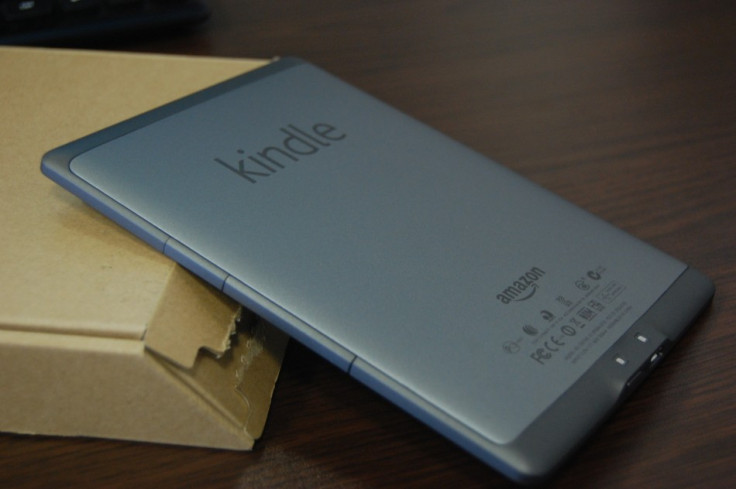Amazon Kindle 4: Review
Launched earlier this week, the new Amazon Kindle is the fourth generation ebook reader to be produced by Amazon and is sold in the UK alongside the renamed third generation, the Kindle Keyboard.
The name change is significant as the new fourth generation model does away with a physical keyboard, instead opting for an on-screen replacement, navigated with a four-way directional pad and select button.

Dropping the keyboard means the Kindle 4 is significantly smaller than the older model, with the same six inch e-ink screen taking up significantly more of the overall size than before, with the page-forward and back buttons slimming down and wrapping around the edges of the reader.
Below the screen are function buttons for the Home screen, menu system and onscreen keyboard, as well as a back button and the direction controls.
The page navigation buttons are right- and left-handed friendly, with a large page-forward and a smaller page-back button on both sides of the screen.

There's a micro USB port on the bottom, along with the power button and LED light, which displays orange when charging and green once fully charged, and when the Kindle 4 is powering up and going to sleep.
A headphone jack is missing from the Kindle 4 because the new model does not offer audio book or music playback, as previous generations have done. It's a slightly strange omission, but one that I dare say will not be missed by many; of the dozens of Kindles I see being read every day, I can't ever recall seeing headphones attached to one.
The Kindle 4 is noticeable lighter than the Kindle Keyboard - weighing in at less than 170 grams, according to Amazon - and thinner too, with the overall size 18 per cent smaller than the older model.

Three different materials are used in the case construction, with glossy plastic forming the screen bezel, a coated metal frame giving the Kindle 4 a study feel, and the back panel is rubberised plastic, helping to keep the device feel secure when held in one had.
All of the buttons have a nice, tactile feedback to them, but the page-forward buttons might be pressed accidentally when gripping the side between finger and thumb, however the lightness prevents you from ever having to grip too hard.
Initial set up takes just a couple of minutes; once a language has been selected and a Wi-Fi network joined, the Kindle 4 is ready to go, taking you straight to the Amazon store. A nice touch is that the Kindle is already logged into the owners account when delivered - providing it's bought with the same Amazon account. This saves having to log in, but sadly your purchased books are not already installed; previously purchased books appear as 'achieved' and must be downloaded to the device.
Having said that, the process takes next to no time, as over Wi-Fi the tiny ebook files take just five seconds or so to download.
I did manage to cause the Kindle 4 to panic briefly, while trying to download my 30-some books quickly one after another, the device froze for a moment - seemingly the screen couldn't keep up with what I was doing. But service was resumed after a couple of seconds; nothing to worry about at all, but worth pointing out nonetheless.
Another problem I encountered early on was the onscreen keyboard. It's not QWERTY, but instead is in alphabetical order. It may be a question of taste, but I would prefer to see a QWERTY layout. Omitting the physical keyboard is a bold move by Amazon; while the majority of users probably didn't write many annotations while they read, searching for books in the store requires a keyboard, and navigating around the onscreen replacement is a bit of a pain.

Having said that, the few extra seconds it takes to type out a book title is made up for by the decreased size and weight of the reader.
In the box there's the Kindle, a USB cable, and instruction booklet.
The Kindle 4 comes with Wi-Fi connectivity, but no 3G - although free 3G is available on the older Kindle Keyboard. Dropping 3G is a shame, because now books can only be downloaded while in a hotspot, which could be annoying when on holiday abroad where there might not be any Wi-Fi. On previous Kindles - and indeed the upcoming Fire and Kindle Touch - free worldwide 3G means books can be downloaded anywhere.

Reading on the Kindle is - as always - a pleasure, and page refreshes are now 10 per cent faster, helping to reduce the momentary screen flicker which e-ink displays suffer from.
With its 2GB of internal storage the Kindle 4 can hold up to 1,400 books, and although there isn't an SD card slot over a thousand books is probably enough for most bookworms.
Battery life - although mightily impressive at one month - is short of the two months offered by the Kindle Keyboard, and charge time is approximately two hours.
Priced at £89, the Kindle 4 offers an ultra-portable e-reader at a price that, for many, represents good value and marks a consistent price cut with every new model released by Amazon. The iconic design of the second and third generation Kindles may have been lost - indeed, the new model looks a lot like Sony's e-reader at first glance - but the added portability is hard to argue against.

The Kindle 4 is a solid update to an already hugely popular and successful device, and shows that Amazon isn't scared of making big changes to the design. For those who desperately want 3G and/or a physical keyboard, as well as the ability to play audio books, the third generation Kindle is still available for £149.
© Copyright IBTimes 2025. All rights reserved.





















